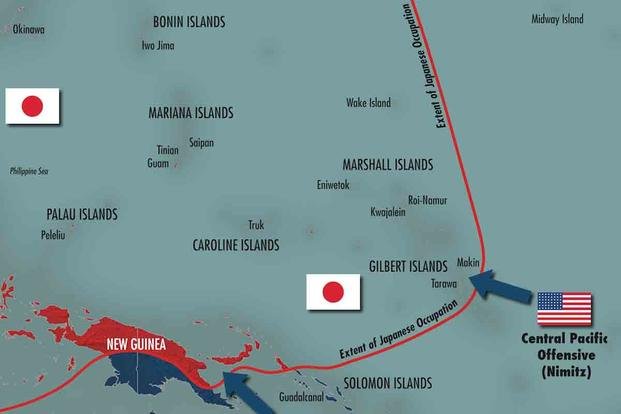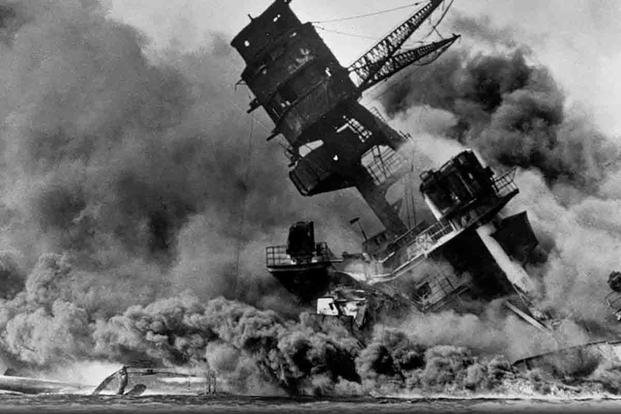When people think of World War II Marines, they probably think of John Basilone, "Pappy" Boyington or Chesty Puller. It's unlikely anyone thinks about Earl Hancock "Pete" Ellis. It's most likely because Ellis died in 1923, but he should be counted, because he accurately predicted everything about the coming war with Japan, from the attack on Pearl Harbor to the island-hopping campaign that led to Japan's final defeat.
Ellis was inspired to join the Marine Corps after reading about the 1st Marine Battalion during the Spanish-American War. He enlisted as a private in 1900, where he took military training from Civil War veterans. He worked to take a test available to non-commissioned officers so they could receive commissions. He passed the test and, by 1902, was a second lieutenant, stationed in the Philippines.
Ellis rose in rank over the next few years, assuming small commands in the Pacific Fleet, China, Japan and Washington before coming back to the Philippines and serving under then-Maj. John Lejeune. In 1911, Ellis found himself serving under George Barnett, who would later become the 12th Commandant of the Marine Corps, as his intelligence officer. Intelligence work is where Ellis would make his mark on history, but World War I would interrupt that work.
After the U.S. entered the Great War and Marines were sent overseas, Ellis was critical in planning the St. Mihiel and Meuse-Argonne Offensives, both of which became Allied victories. He left the war with a Distinguished Service Medal, Navy Cross and the French Legion d'Honneur, but he was still an intelligence officer and the Navy had missions for him.

He was sent to the Dominican Republic, where he conceived of ways to end the insurgency there. On the Mexican border, Ellis assessed the likelihood of German agents seizing Mexican oil fields. In 1920, there was a new empire on the rise in the Pacific, and the Marine Corps wanted to know what to do in case of war with Imperial Japan. They sent Pete Ellis to find out.
Ellis worked around the clock on his projects, often with little sleep, and his assessment of the Japanese was no different. He departed for the Marshall Islands and the Caroline Islands, which were then (along with Peleliu) occupied by Japan. Posing as an imports executive at his father's company, he visited Australia, New Zealand, the Philippines and even Yokohama, Japan, trying to get access to the Marshall Islands.
The Japanese suspected he was conducting an intelligence operation, but Ellis still managed to reach Saipan in the Marianas, and ultimately the Carolines, Marshalls and even Peleliu. He visited Indonesia and New Guinea as well. Japanese intelligence followed him wherever he went, and when he helped the crew of a civilian liner during a storm, they knew he was in naval intelligence.
When Ellis arrived in Palau, he was gravely ill. For much of his career, Ellis was an alcoholic. The symptoms of his alcoholism finally caught up to him in Palau. He refused to stop drinking, despite his worsening condition. Japanese police, fully aware of his addiction, sent him two bottles of whiskey. Ellis died after consuming the whiskey, but his work was done.
Ellis completed "Operations Plan 712: Advanced Base Operations in Micronesia," before he died, and it would be the plan used by the Americans to defeat Japan in World War II. Twenty-one years later, this work would make Ellis seem prophetic.
The introduction of the plan explicitly stated "we cannot count upon the use of any bases west of Hawaii except those which we may seize from the enemy after the opening of hostilities... the enemy will, during the first phase of the operations, hold his main fleet in home waters, and endeavor with torpedo, mine and aircraft to reduce our superiority to a limit where he believes he can safely risk a main fleet action."

In describing the enemy, he noted the United States' post-World War I policy of non-aggression, saying Japan would no doubt strike first, believing it could defeat the American fleet. Japan, he said, would also defend certain points and bases at all costs, and those points would be the ones of most value to the U.S., foreshadowing the American island-hopping strategy that would target Guam, Iwo Jima, Saipan and other Japanese bases.
Ellis was interred on Palau after his death, but the Marine Corps traveled to the island, exhumed the body and cremated his remains. His urn eventually made its way back to the U.S. and was buried in Ellis' hometown of Pratt, Kansas. In 2004, his remains were moved to Arlington National Cemetery.
-- Blake Stilwell can be reached at blake.stilwell@military.com. He can also be found on Twitter @blakestilwell or on Facebook.
Want to Learn More About Military Life?
Whether you're thinking of joining the military, looking for post-military careers or keeping up with military life and benefits, Military.com has you covered. Subscribe to Military.com to have military news, updates and resources delivered directly to your inbox.












